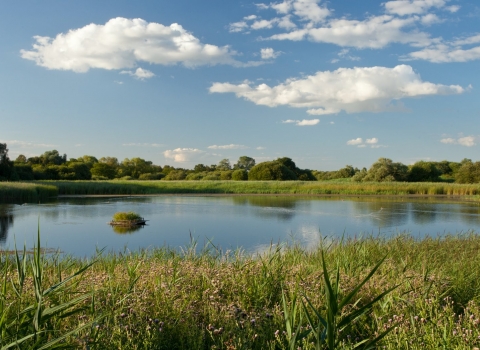Habitat restoration work in the Great Fen will help to reduce the risk of flooding in the local area.
New areas of the Great Fen will provide extra water storage during heavy rainfall, helping to protect surrounding towns, villages and farmland from the risk of flooding.
Why is extra flood protection needed?
As the climate crisis escalates, it is predicted that there will be more extreme periods of heavy rainfall, leading to an increased risk of flooding when water can’t be pumped out to sea fast enough.
Flooding is a particular risk in the fens, which is flat and low-lying - many areas are below sea level. For farmers and communities, the effects of flooding can be devastating and costly.
Currently in the area of the Great Fen, Woodwalton Fen is used to temporarily store water during heavy rainfall. However, there are two problems:
Firstly, Woodwalton Fen is too small to cope with the more extreme rainfall events predicted in the future.
Secondly, the flood water often contains nitrates and phosphates from the surrounding farmland, which interferes with the sensitive ecosystem at Woodwalton Fen - an internationally important wildlife site. The water often comes at the wrong time of year for the wildlife too.
Future flood protection
The Environment Agency and Middle Level Commissioners, two of the Great Fen partners, are working to create new water storage areas in the Great Fen area for times of heavy rainfall. These will provide larger areas than are currently available for emergency storage, and will take the pressure away from Woodwalton Fen.
This is part of a scheme to protect thousands of acres of surrounding farmland and communities.
Below is a clip from the film 'Memories from the Fen' featuring recollections from local people about flooding.
